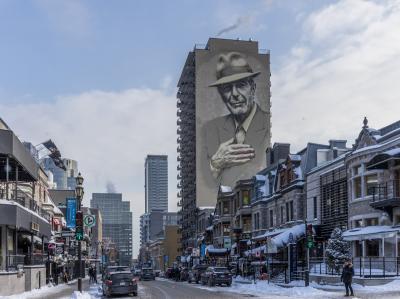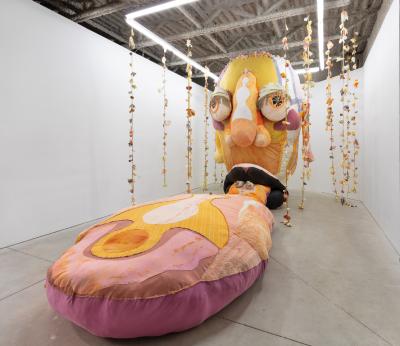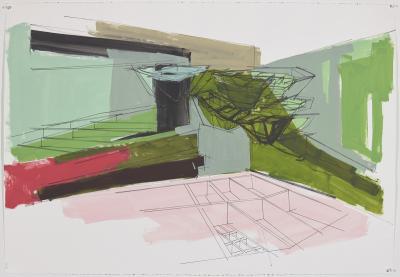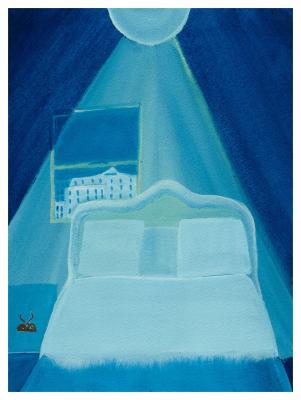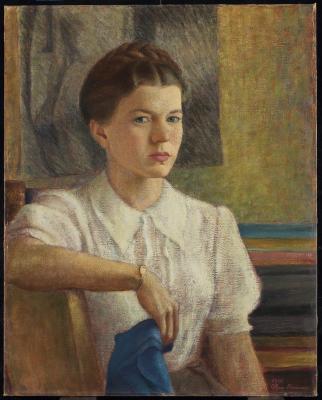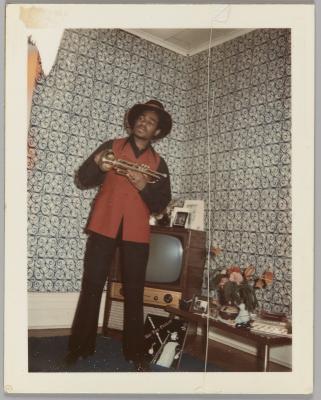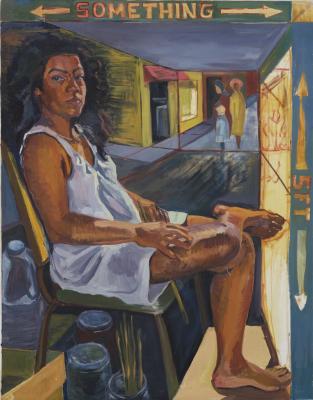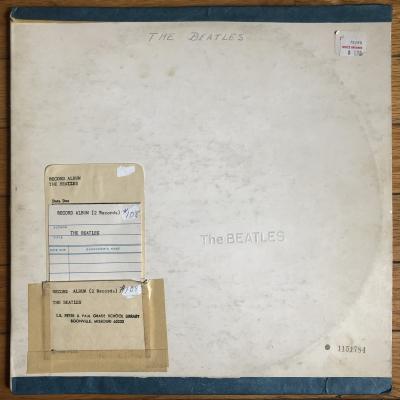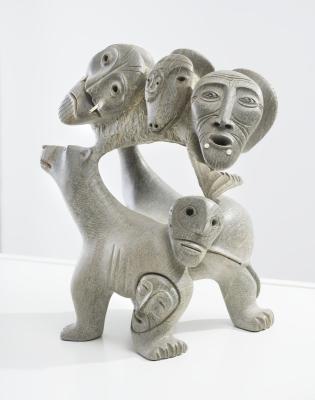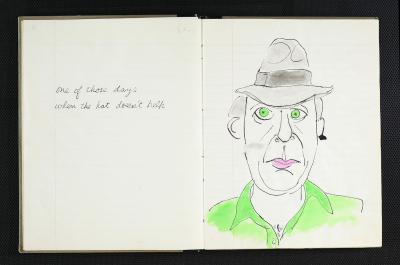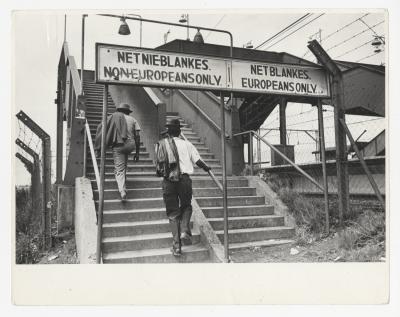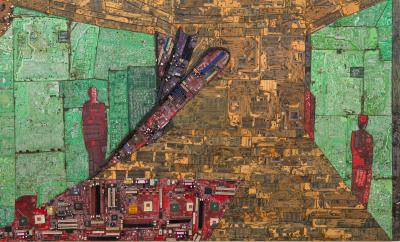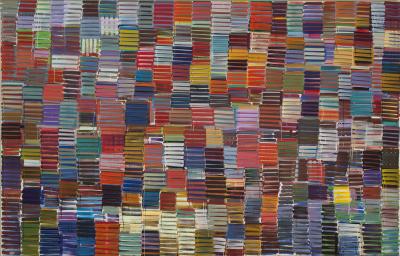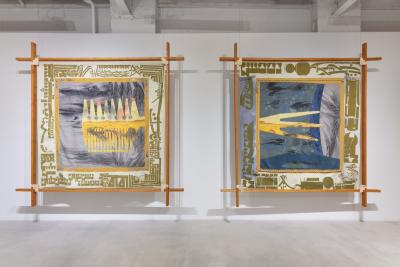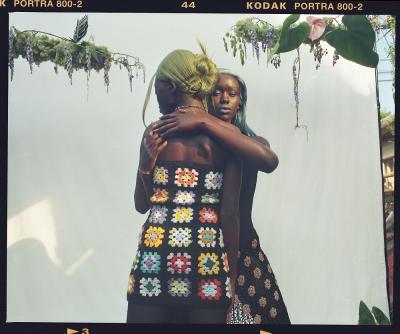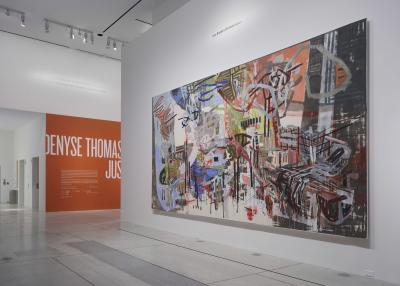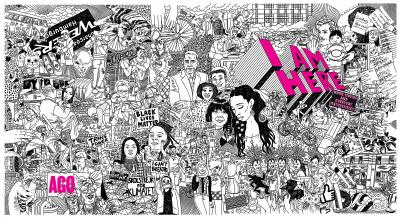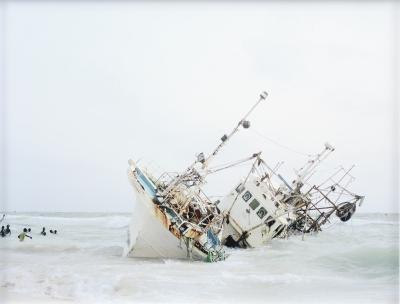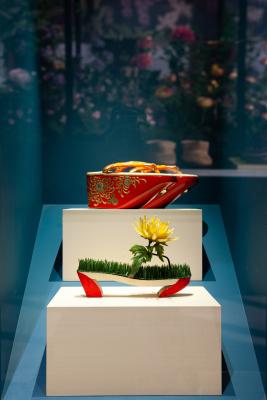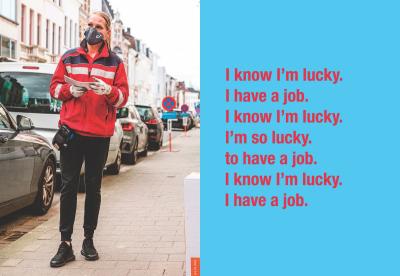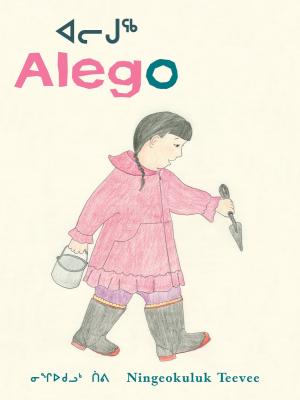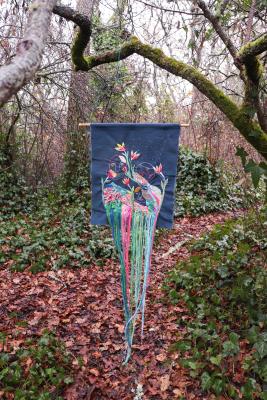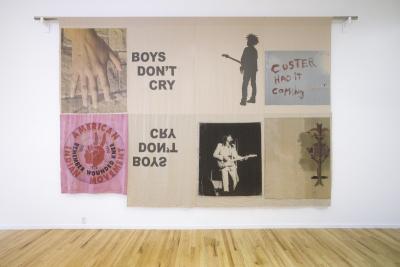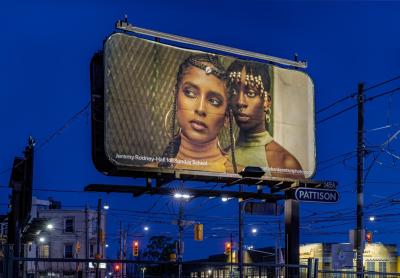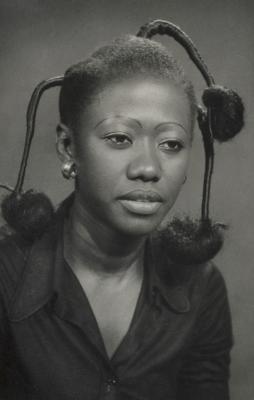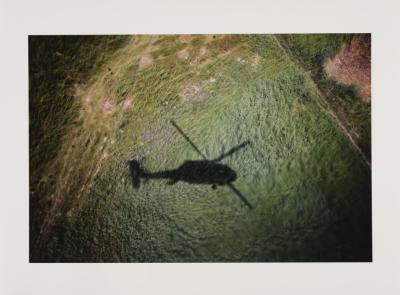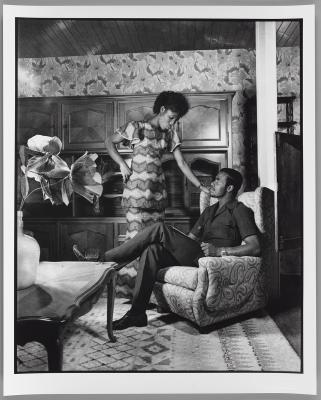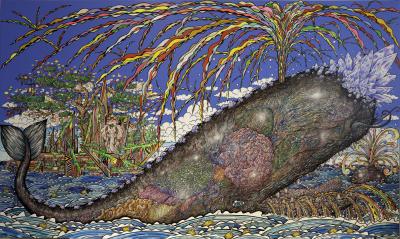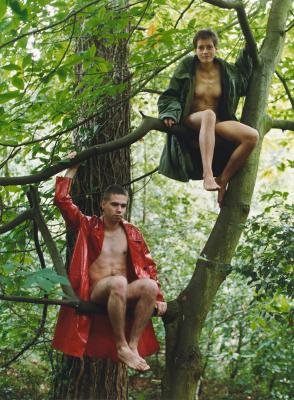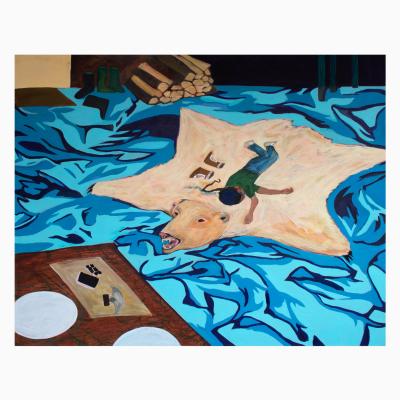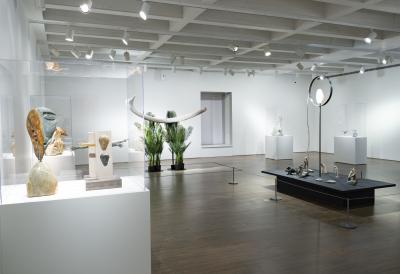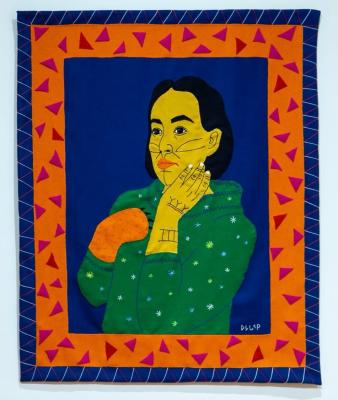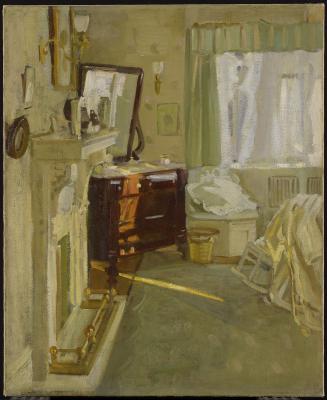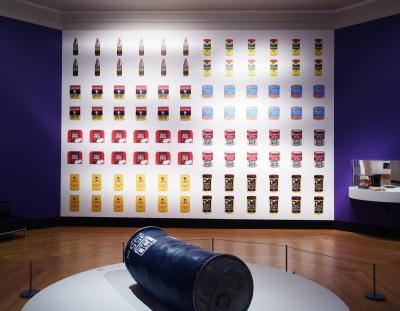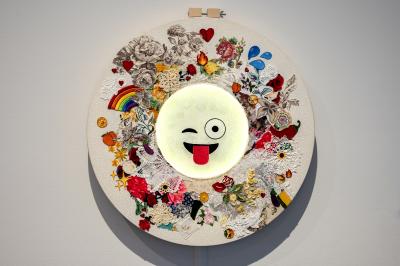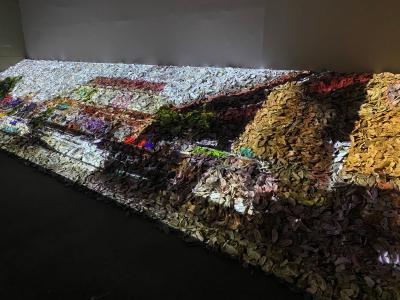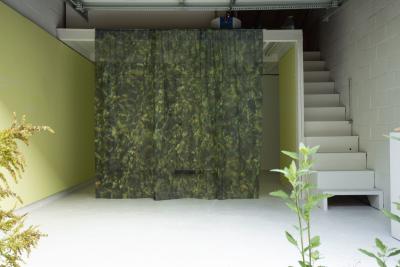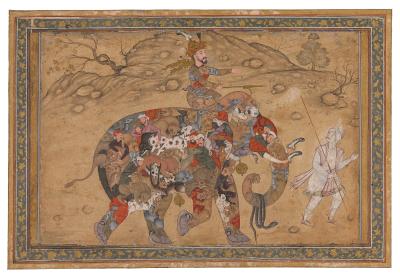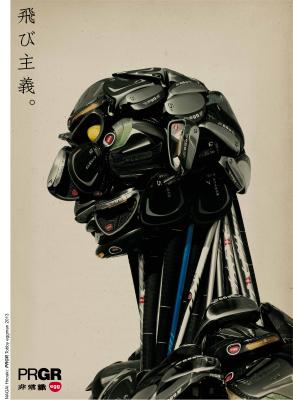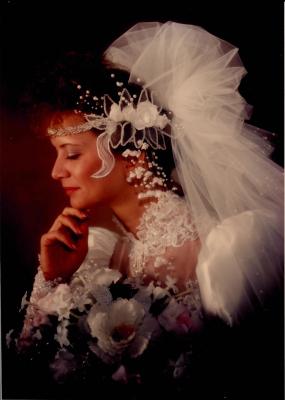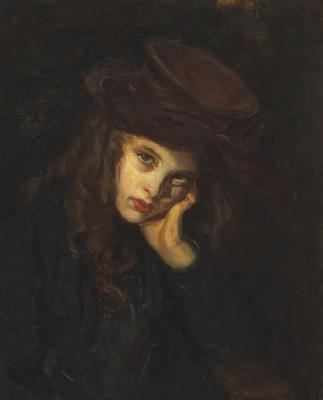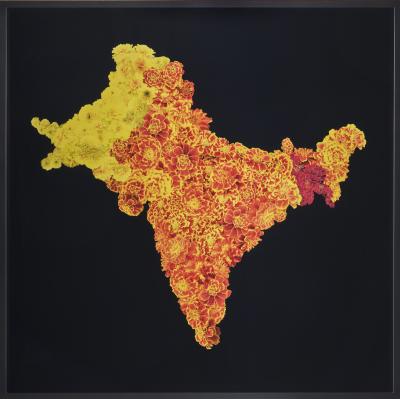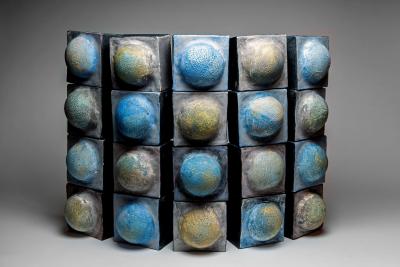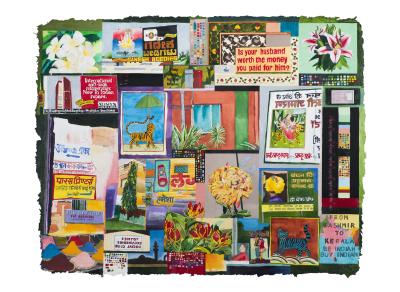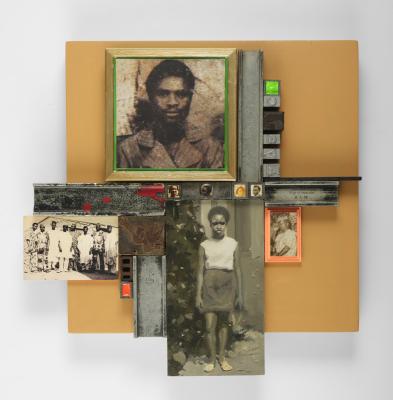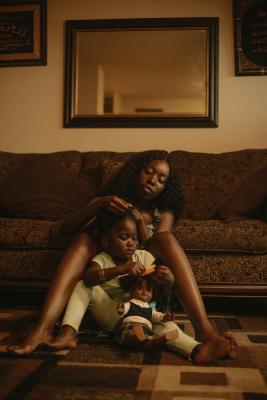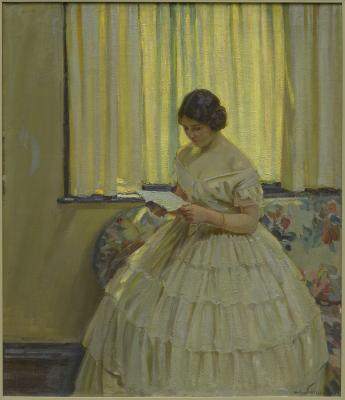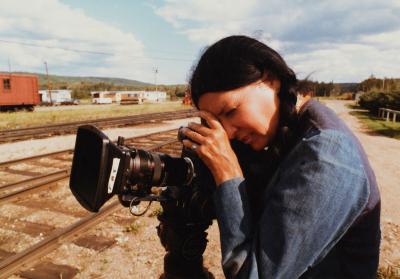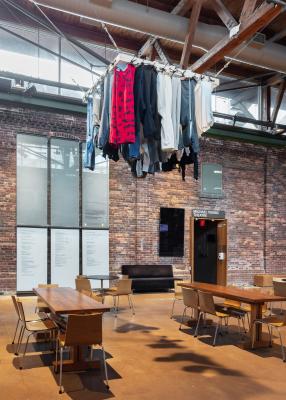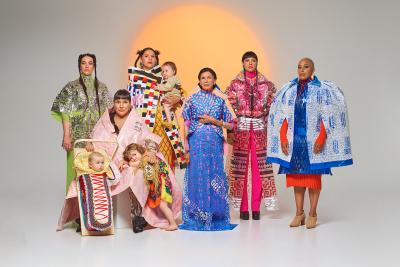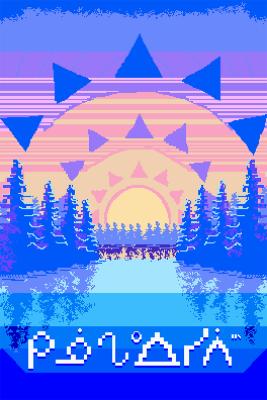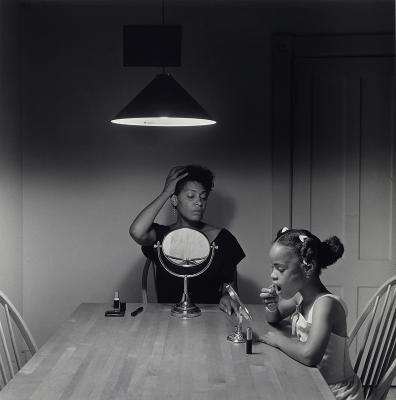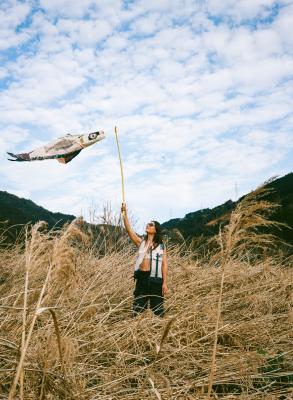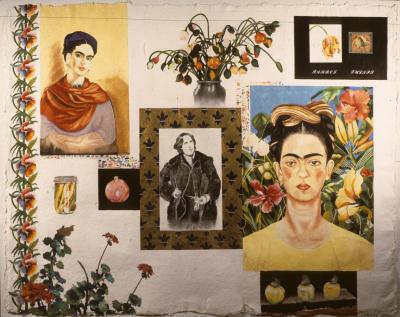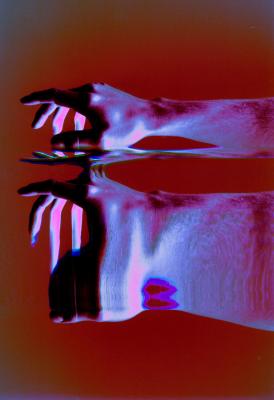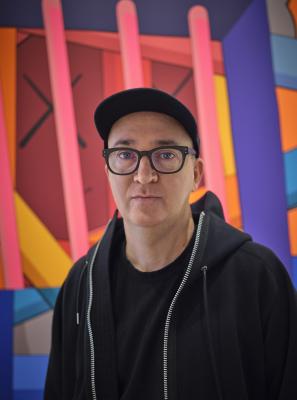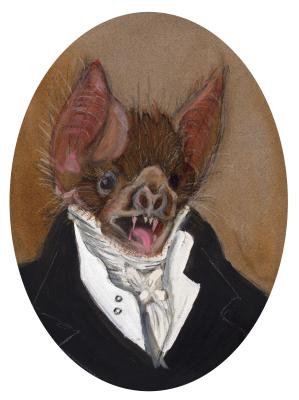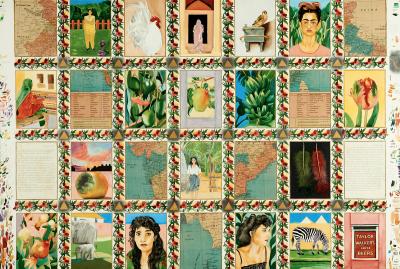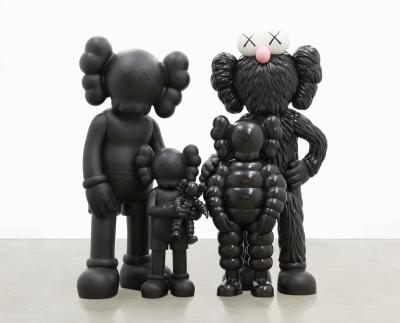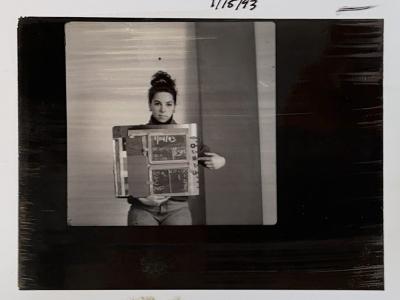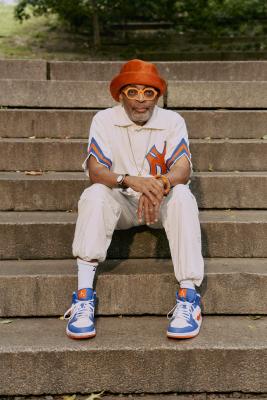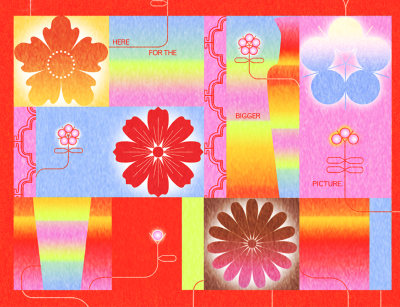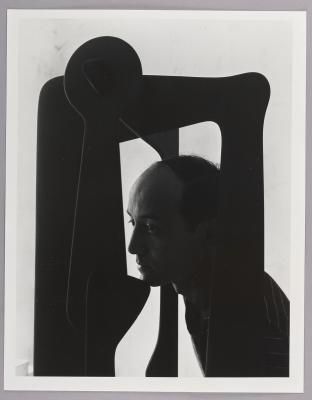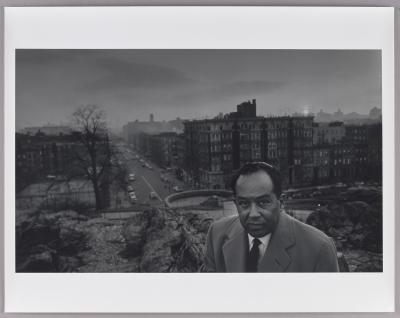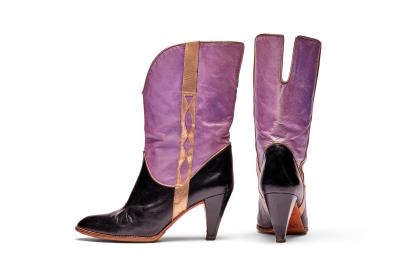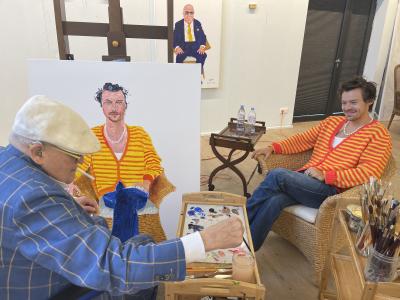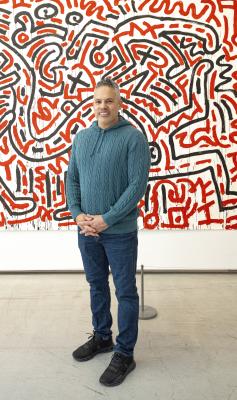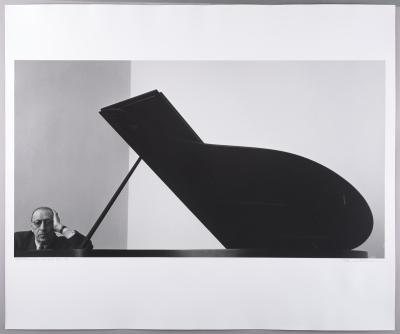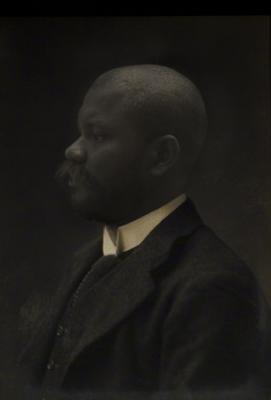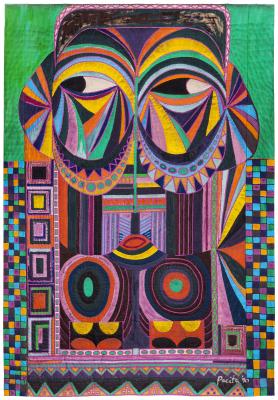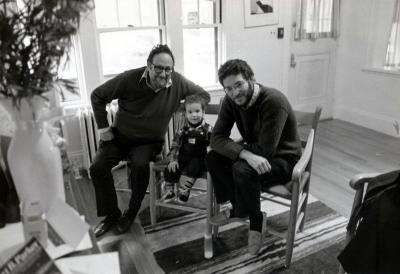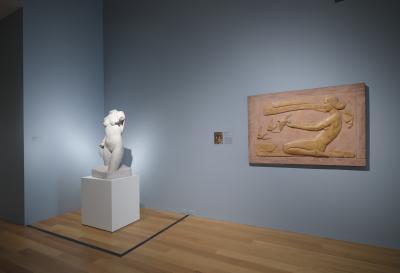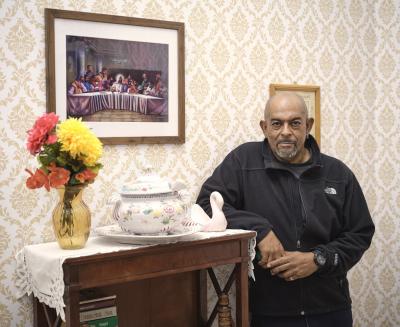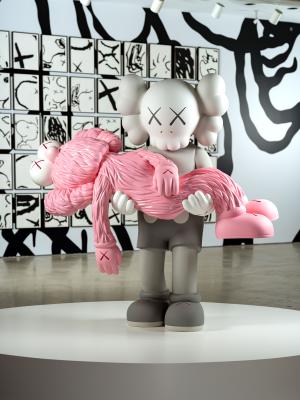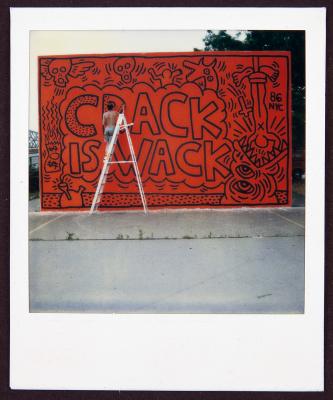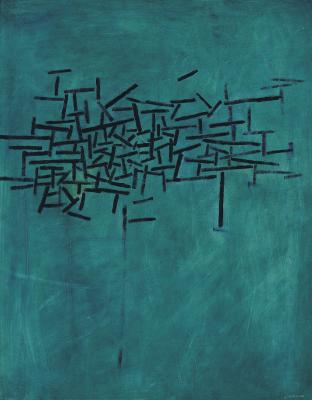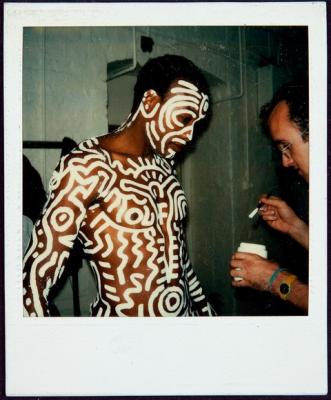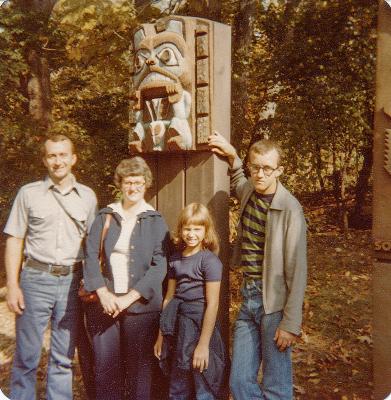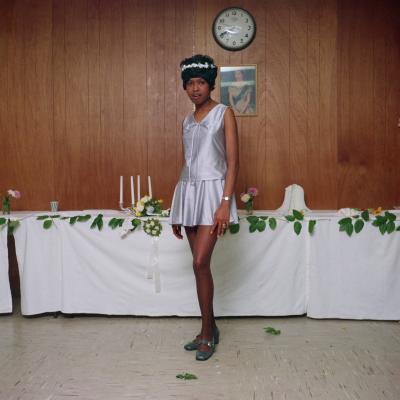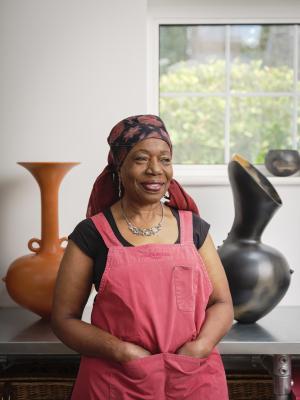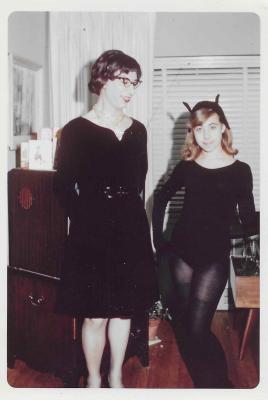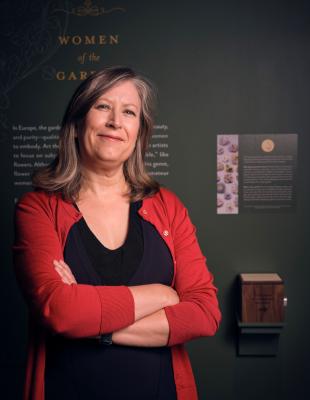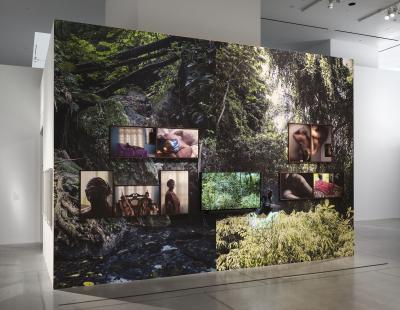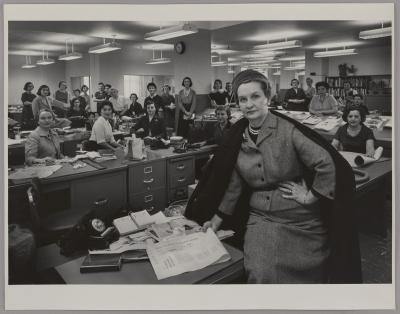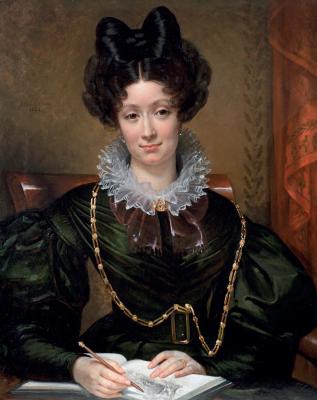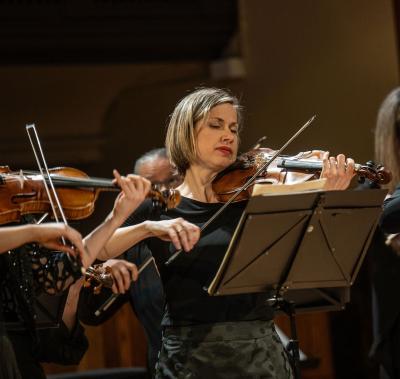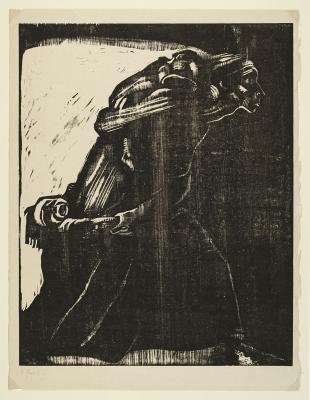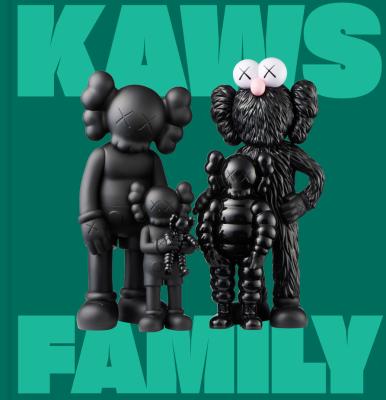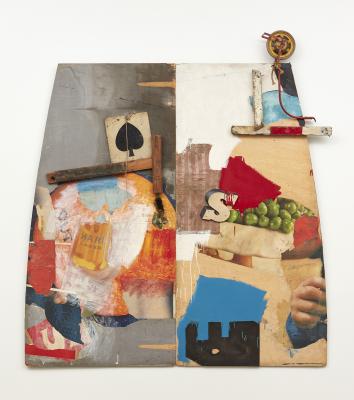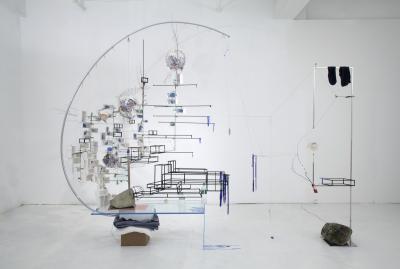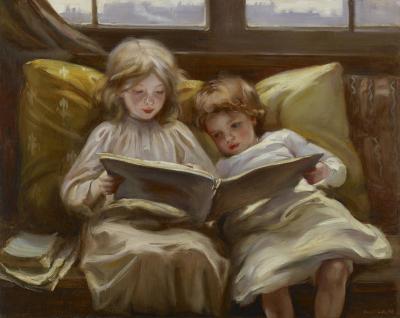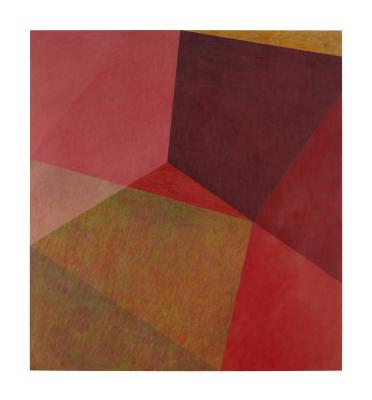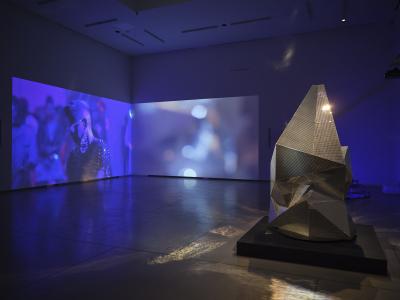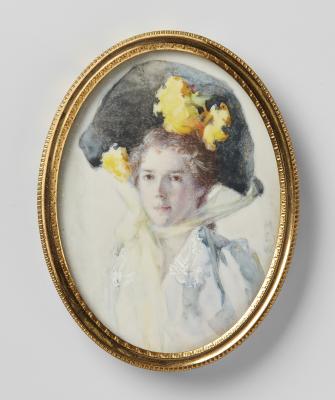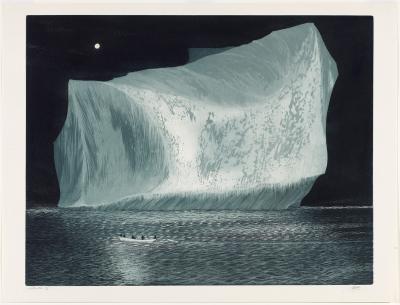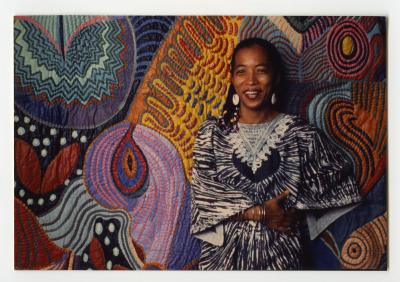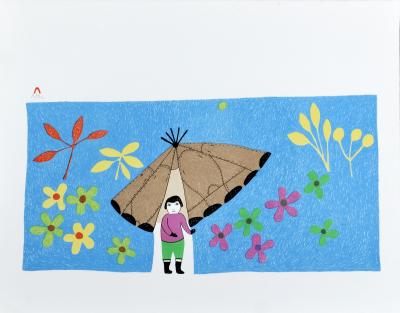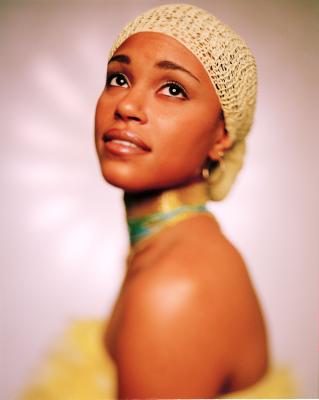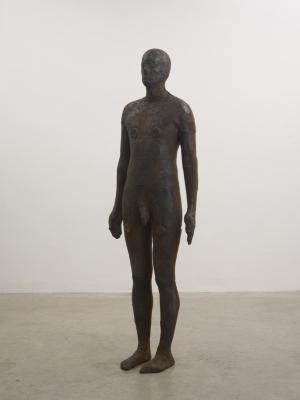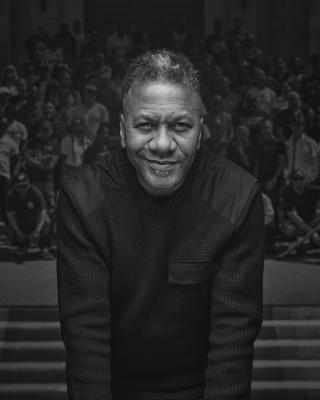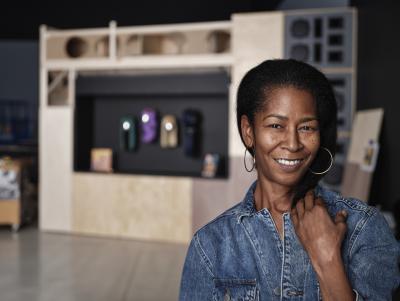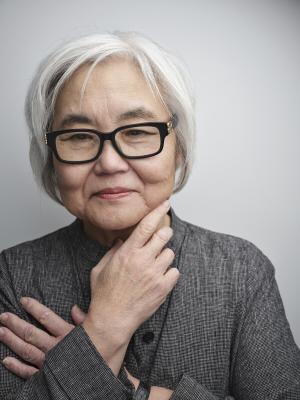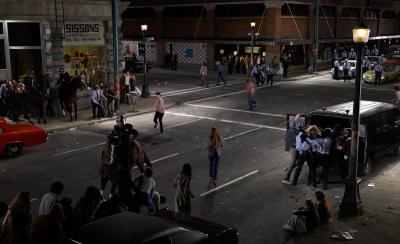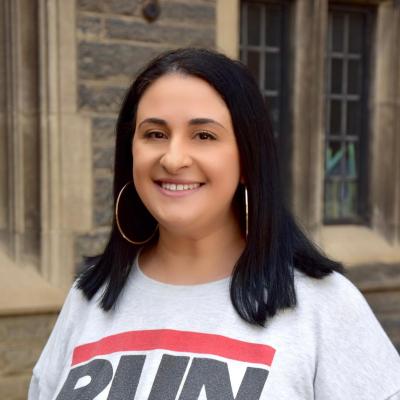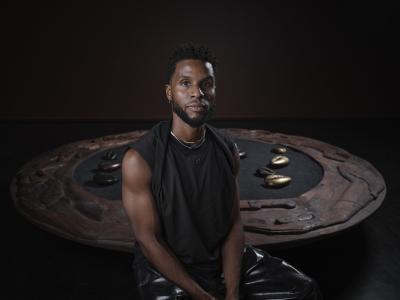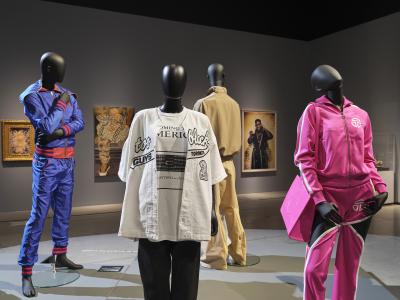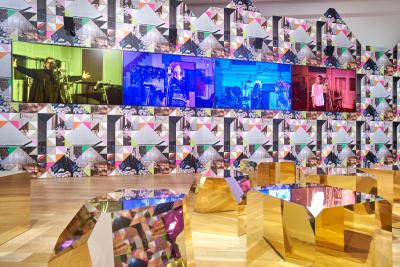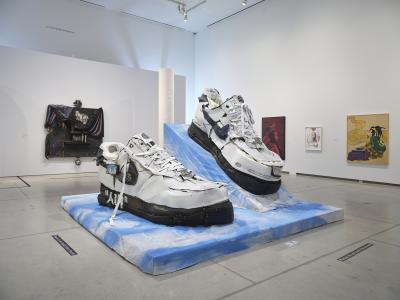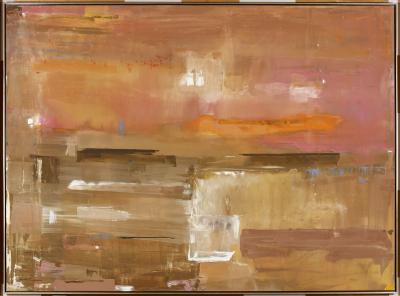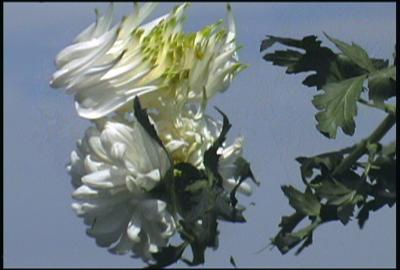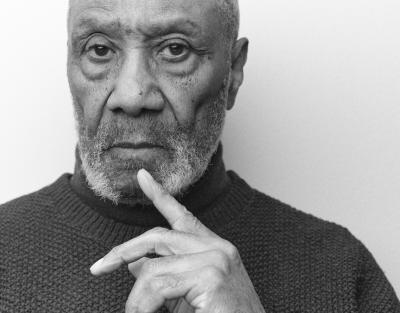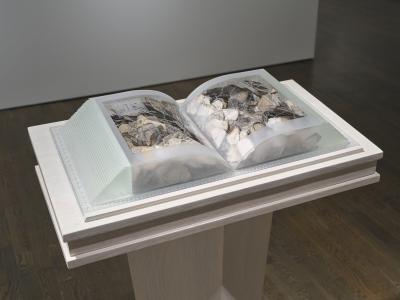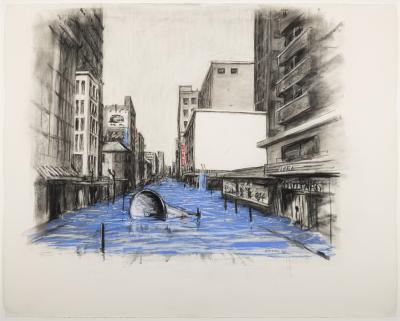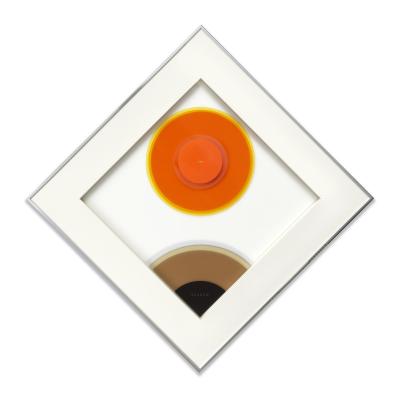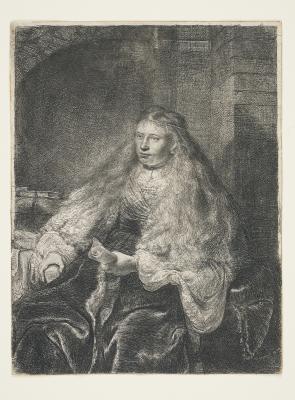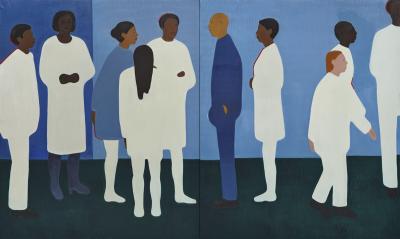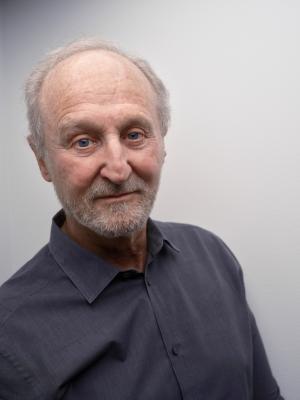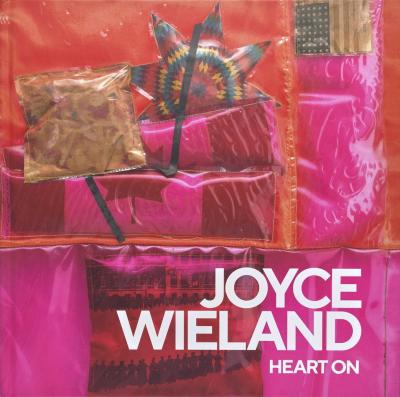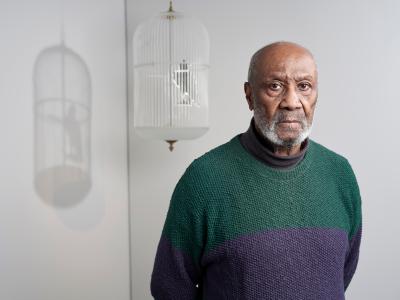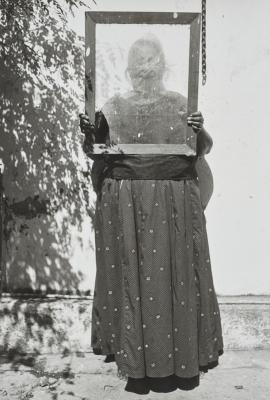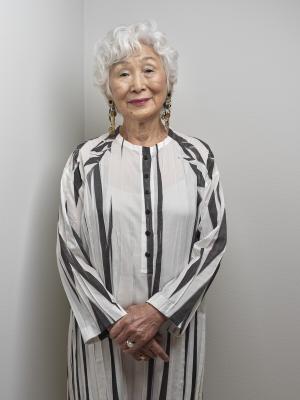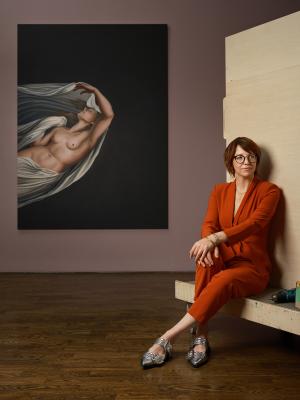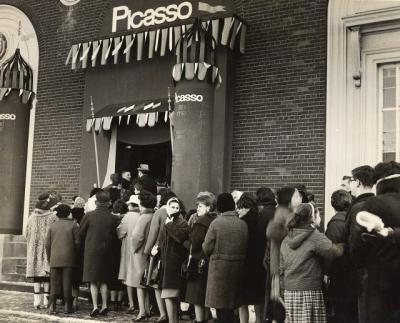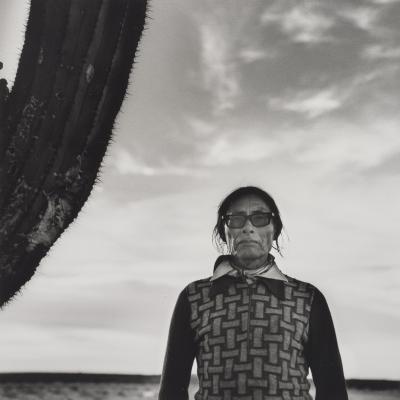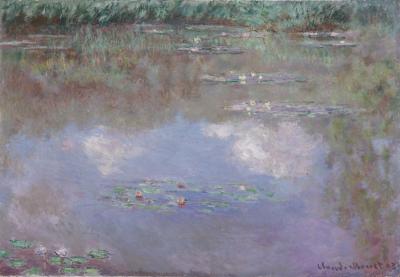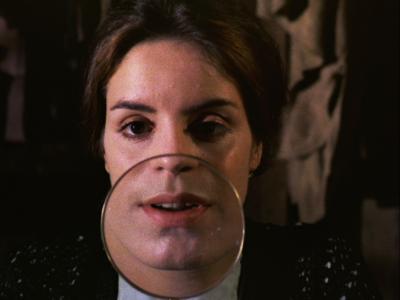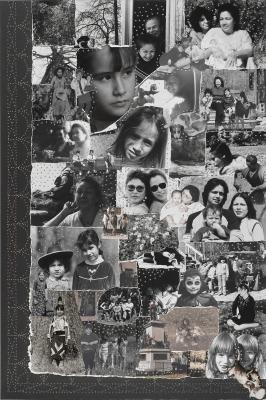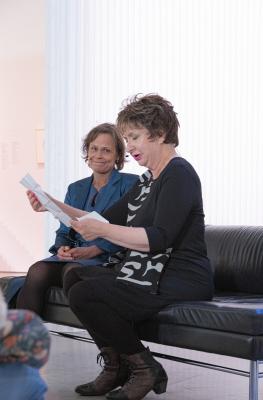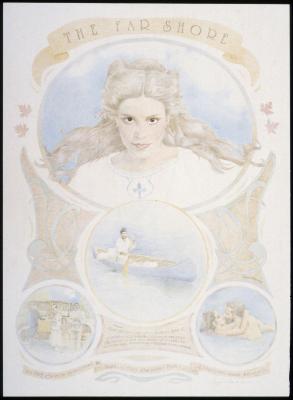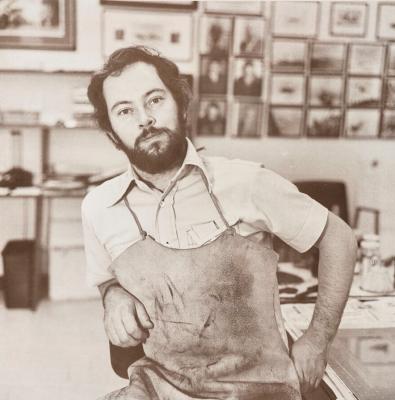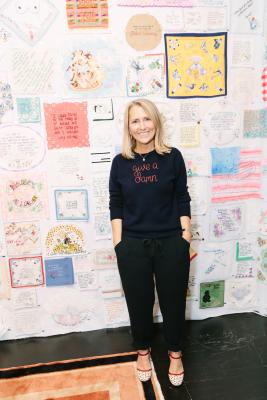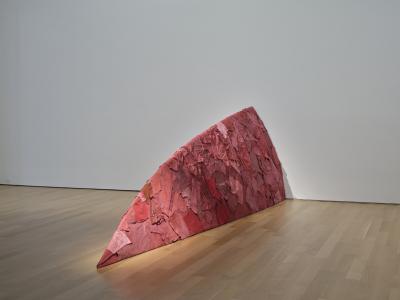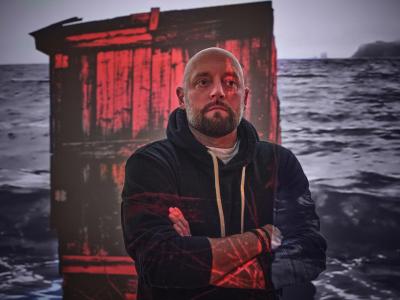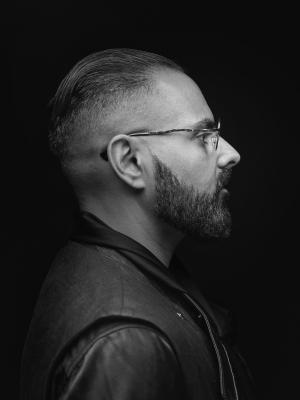From Memory to Monument
Inuvialuk sculptor David Ruben Piqtoukun on memory, materiality and his latest solo exhibition.
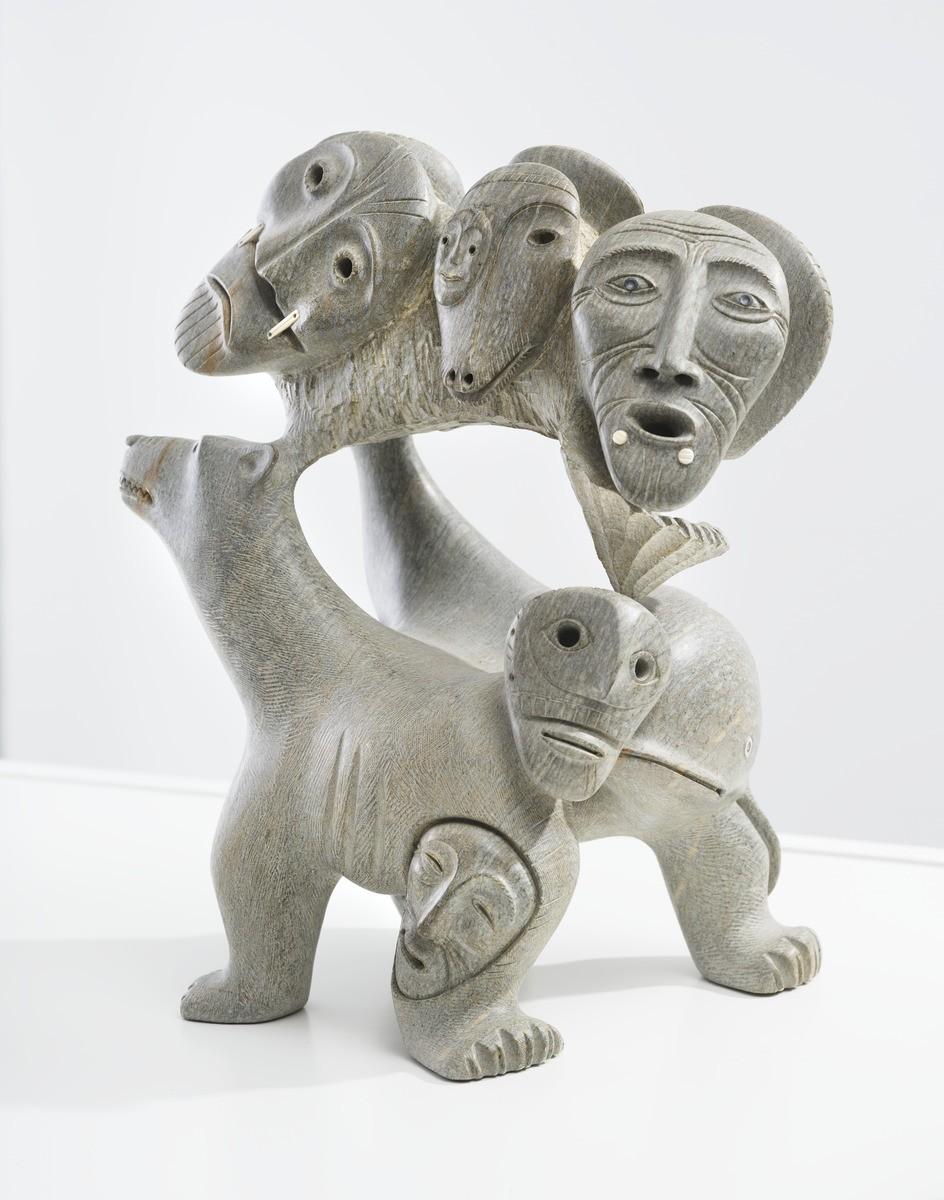
David Ruben Piqtoukun. Spirit World of the Inuit, 1984. Grey Brazilian stone, ivory, red Arizona Pipe stone, black African wonder stone, antler inlay, Overall: 45.6 × 36.4 × 29.6 cm, 28.1 kg. Gift of Samuel and Esther Sarick, Toronto, 1996. © David Ruben Piqtoukun. Photo AGO. 96/564
David Ruben Piqtoukun has been mastering his craft for nearly five decades. Born in Paulatuk, Northwest Territories, in what is now the Inuvialuit Settlement Region, Piqtoukun ᑎᕕᑎ ᐱᑐᑯ ᕈᐱᐃᓐ is a revered Inuvialuk sculptor working with stone, metal, wood and bone, part of the first generation of Inuvialuit sculptors to work in the South. At the AGO, Radical Remembrance spans Piqtoukun’s career as an artist, bringing together 50 of his sculptures ranging in scale and material, some of which are drawn from the AGO Collection. Curated by Wanda Nanibush, AGO Curator, Indigenous Art, the exhibition is Piqtoukun’s first major solo exhibition at the AGO. It comes as he was recognized in 2022 for his creative output, innovation and leadership with a Governor General’s Award in Visual and Media Arts.
Memories become monuments in Piqtoukun’s 50 years of work from 1972 to 2022, embodying a distinct point between material inventiveness, humour and craftsmanship. In his style, often combining materials in unexpected ways, he works from his memories and Inuit knowledge passed down through the generations, immortalizing the stories he feels are essential to remember. With his childhood stolen by the residential school system, his art has become an act of resistance and reclamation. By 1975, after his first solo exhibition at Arctic Limited, Piqtoukun began learning Inuit stories and oral histories and channelling them into his art. His work – while beautiful – comes with a sense of precariousness, explains Nanibush. “There is very real, raw emotion in these works, created by an artist seeking to reclaim what was stolen from him. In his new works – made specifically for this exhibition – we see his ongoing innovation as he challenges expectations and explores new materials while continuing to resurface deep knowledge. Shamans can fly, yes, but in Piqtoukun’s world, they take a plane.”
We caught up with Piqtoukun and Nanibush to learn more about the process and meaning behind the artist’s work while they were finishing installing the exhibition on Level 1 in the Philip B. Lind Gallery (gallery 132).
The following interview has been edited for length.
Foyer: First, what does radical remembrance mean to you?
Piqtoukun: Wanda?
Nanibush: Radical means root, so we thought about how [Piqtoukun] had the residential school experience and then dislocation. Through [his] work, [he does] a lot of memory work, like remembering stories, connecting to the land, connecting to the animals. There is resistance in doing that memory work.
Piqtoukun: In my past, I've had a lot of trials and errors. I'm from the Western Arctic initially. A little village in the Western Arctic named Paulatuk. At a very early age, I was sent off to boarding school, so that was my first remembrance. I didn’t know where I was going. They didn't explain anything to us children. There were about ten of us just thrown onto a plane, and off you go. I remember that we didn't have a clue about where we were going. I just heard the sound of the plane; it was a really loud drone sound. Eventually, I ended up in a little town called Aklavik. We were put into the Roman Catholic boarding school. That's my earliest recollection. It brought out a lot of hatred in me. I was a fighter. When I got upset, the only answer was a fist, just to relieve the tension and maybe understand the situation much better. It's happened all my life. I have a very short fuse.
That’s in the past because now, I can deal with my anger issues. I incorporate the anger I used to have [into my art]. I still have a little bit [of anger] left, but I can cope with the issues around me and people. Nowadays, for the last three years at least, I’ve been incorporating that anger feeling, anxiety and such into a different matter. I incorporate that into my stone carving and sculpture. I use [it] as a format to keep me calm, cool and collected and to learn about my own personal culture, which is the Inuvialuit from the Western Arctic.
Foyer: What does it feel like to see the works from the early part of your career and the more recent ones together in one space?
Piqtoukun: That’s a lot of work in one setting. Did I do all that? In the early work, you’ll see a lot of conflict between stone and stone carving techniques. I've been refining my stone carving techniques and sculpture for the past 50 years. And once the show is up, you'll see that the early workflow into the most recent, which is like Thar She Blows! (2021). I call it radical. My memories are in there. And somewhere in between that, there’s a calming. I have calm running through my mind.
But I had a lot of influences over the years. Stone carvers like Judas Ullulaq from Taloyoak and my favourite, Luke Anguhadluq from Baker Lake. They inspired my thinking, they inspired me to learn about my culture. At the boarding schools I went to, we were forced not to speak our language and to forget about the things that were customary for us. Basically, I see it as an education in forgetting. “Forget who you are. Forget how to speak your language, the customary things you do, the traditional things. Forget all that. We're going to teach you a different way of life, a different way to speak, and a different way to look at the world.” It was their way, not our way. There are still residual effects of that system. As I said, I realized it boils down to anger, frustration and anxiety. I just do something with [those feelings]. Make it solid and turn it into stone. I can do something with it. I let the stone speak for me.
Foyer: You’ve said that when you're working with the materials, it's almost like they are speaking with you.
Piqtoukun: I'm glad you mentioned that because, with these materials, I study the rock, the shape, weight and different angles, sometimes for a couple of weeks or even a month or two, sometimes many years until something happens. [The material] shows like an elbow or an arm or finger. It shows a movement, and that's when I'm ready to tackle [it]. It allows me to come in. I have to show it respect to create free beauty.
Foyer: How do you choose to combine materials, especially in the newer works?
Piqtoukun: This one is called People of the Midnight Sun [image below]. There are two faces, back-to-back. It has to do with the land claim settlement in the Northwest Territories. People recall, in certain areas, a common expression. You’d look over a vast map of the Arctic, and someone would ask you, “where were you born?” You’d say, “up here.” So it’s [a way] to just to mentally claim this area as homeland. If more people are trained to have knowledge of that land, to reclassify it, it becomes part of their land claim property or settlement. [In the sculpture,] the person speaks out the same word, the same story every day on both sides. The red sun is symbolic of the sunset. The blue is symbolic of the cold. July is the hardest part of the year. The water’s always cold. Freezing cold.
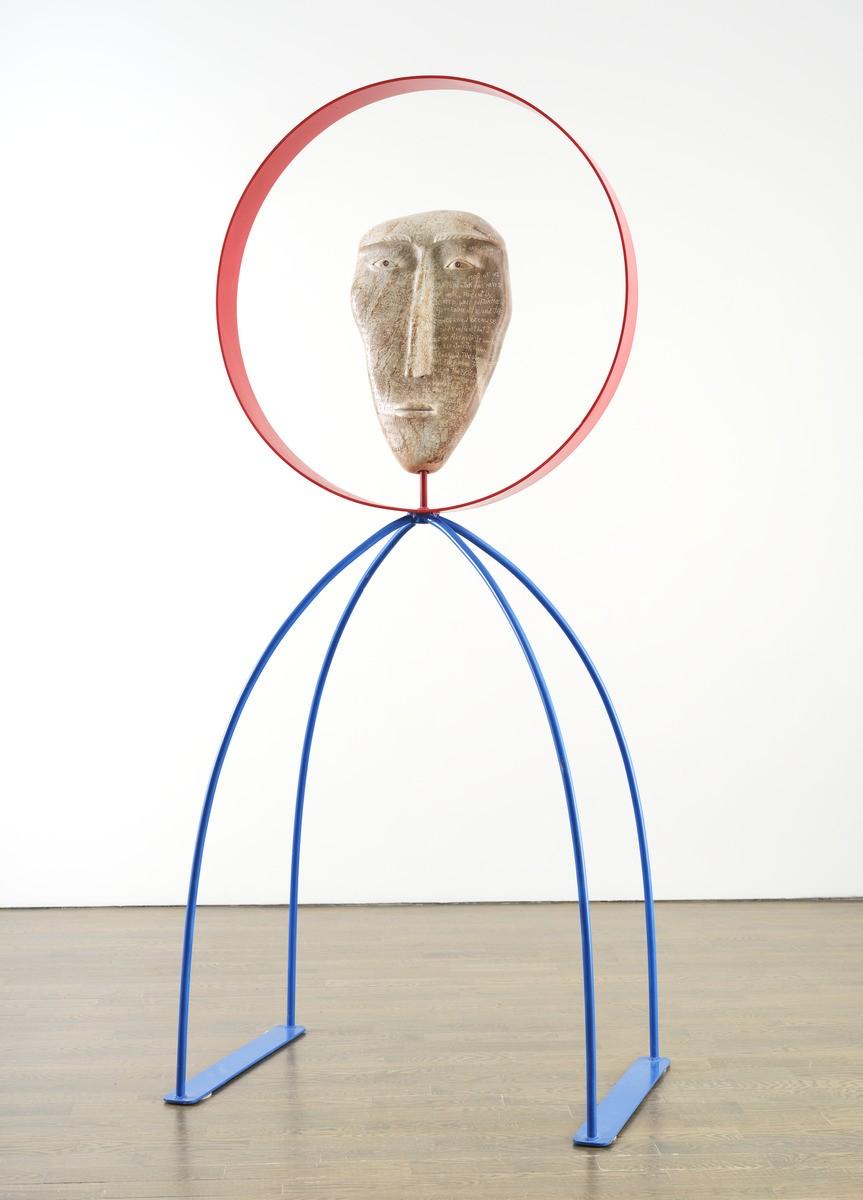
David Ruben Piqtoukun. Shaman Muskox Transformation, 2010. Brazilian soapstone; antler; fur, with antlers installed; 37 × 26 × 72 cm. Private Collection. © David Ruben Piqtoukun. Photo AGO.
Foyer: You have a bit of humour in your work as well. Can you tell us about that?
Piqtoukun: I’m inspired by my father. His name was Billy Ruben. I respected him from when I was a child. I watched him carve when I was younger. I asked him how he did this and how he did that. He gave me instructions on what to do, like how you work on this material, etc. He put a lot of humour into his stone carving work. For me, [that humour] took a long time to develop. I tried and tried. He’d say, “No, no. Not quite. Not quite there yet, David.”
Foyer: Storytelling and Inuit mythologies are so central to your work. How do you go about choosing the stories that you want to tell in your sculptures through your sculptures?
Piqtoukun: This one, Shaman [image below], for instance, has to do with taboo. In our culture, we have taboos. An example of a taboo is when someone watches something transformed from one image to another. That's a major taboo, you're not supposed to see things like that. When that happens, you will be dead within a certain period of time. This carving shows the very moment this person was caught transforming. He feels sorry for having been seen and causing the death of someone because they saw that taboo.
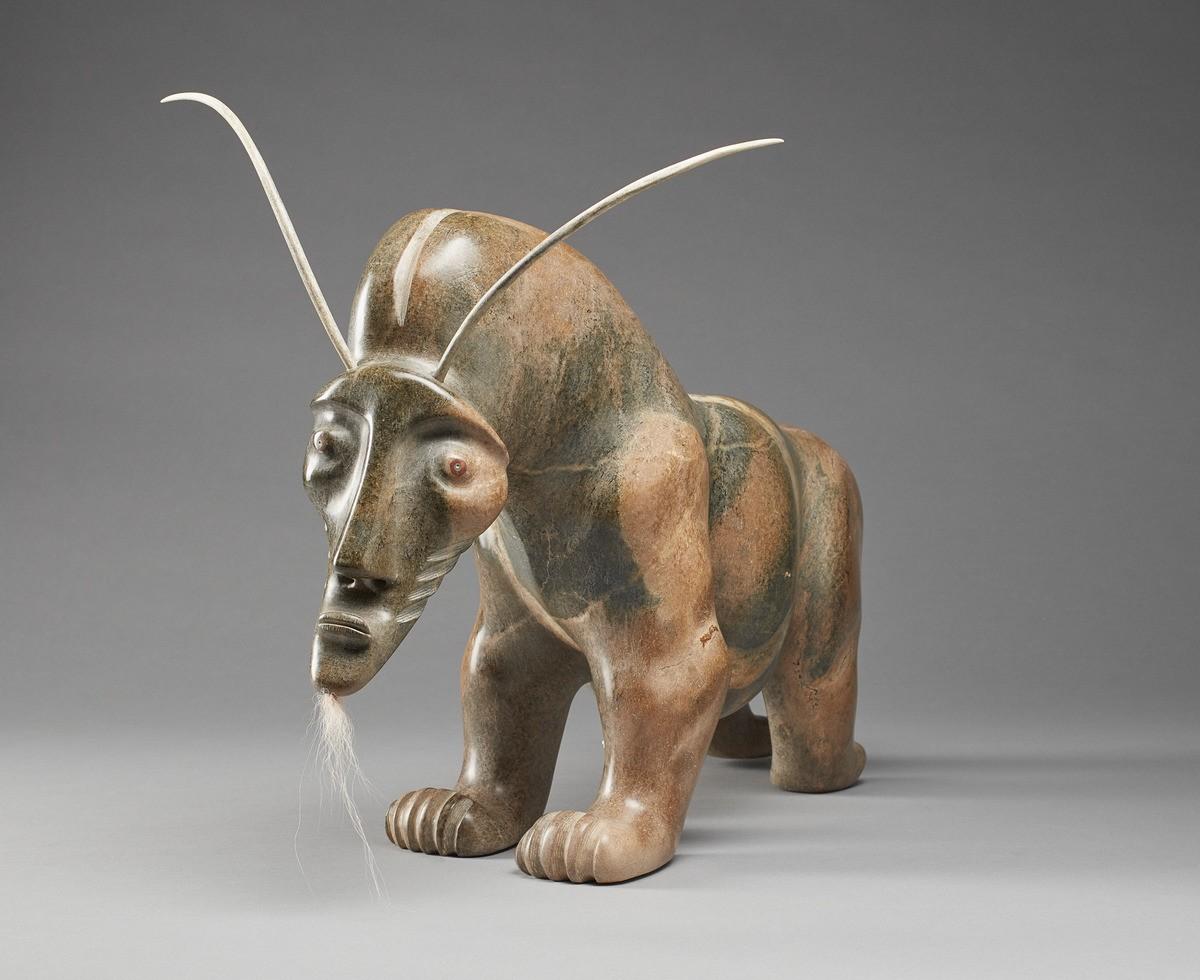
David Ruben Piqtoukun. Shaman Muskox Transformation, 2010. Brazilian soapstone; antler; fur, with antlers installed; 37 × 26 × 72 cm. Private Collection. © David Ruben Piqtoukun. Photo AGO.
The one beside that is called Division of Meat [image below]. In our culture, people have to survive and survive communally. They share food and make sure everybody's taken care of. It's like a ritual to share whatever food that you got, and no one ever starves or anything. There were many periods of famine in the Arctic, and even now, animal migrations are different. [The animals] don't show up when they are supposed to. They fly different routes, so we're losing. Also, the seals and the fishes from the sea are mysteriously changing their migration patterns. It's really important that you share with your fellow people when you have it.
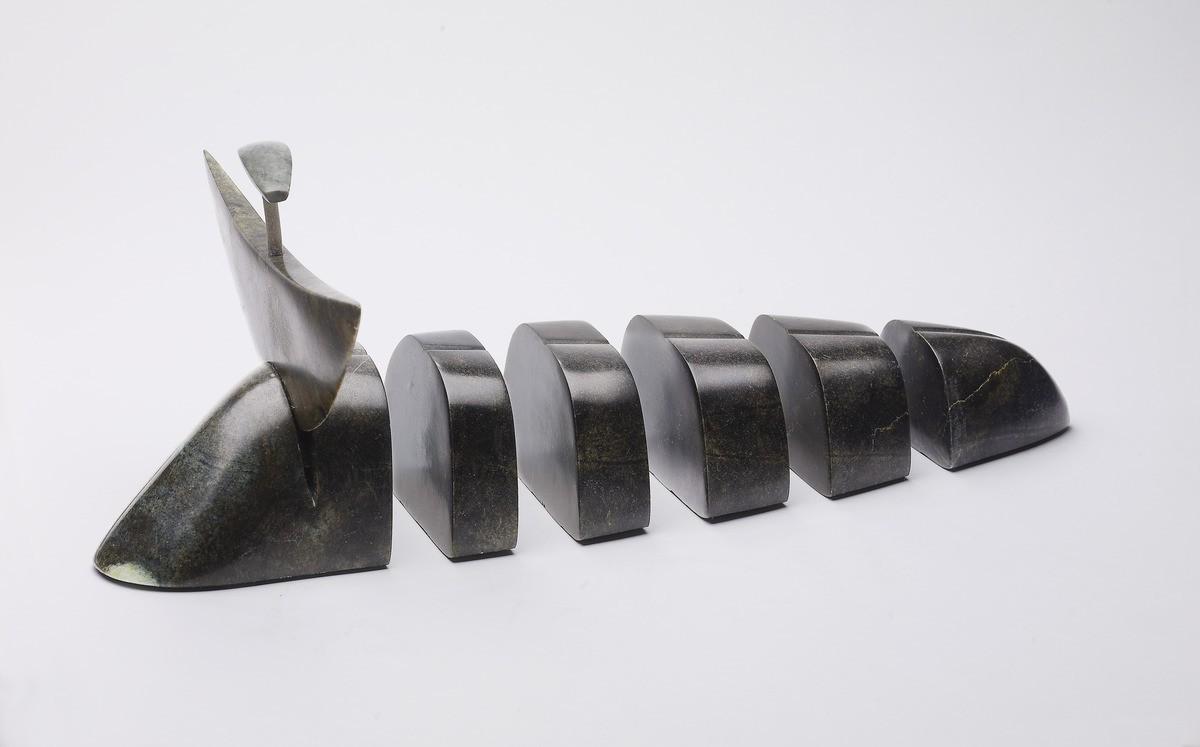
David Ruben Piqtoukun. Division of Meat, 1996. Brazilian soapstone, Overall approximate 19 x 14.5 x 51 cm. Gift of Samuel and Esther Sarick, Toronto, 2001. © David Ruben Piqtoukun. Photo AGO. 2001/417.
Foyer: Tell us about Thar She Blows! (2021). Why is it painted blue?
Piqtoukun: We’re in a period of time where even the blue whale is going extinct because of overfishing and over-whaling. This represents my concern about when a blue whale was spotted. It hasn't been seen for many years. Some people figure it's one of the last few blue whales on the planet. Thar She Blows! is just an indication that the whales were still alive at one point.
Foyer: Is there one sculpture that is the most meaningful to you? Or do they all mean something to you?
Piqtoukun: It’s the most difficult one. The most stubborn that I was battling for a long time, the better part of two years. Shaman in Flight is the memory of being abducted. I was on the plane, hanging on. We didn't know where we were going, just into the unknown.
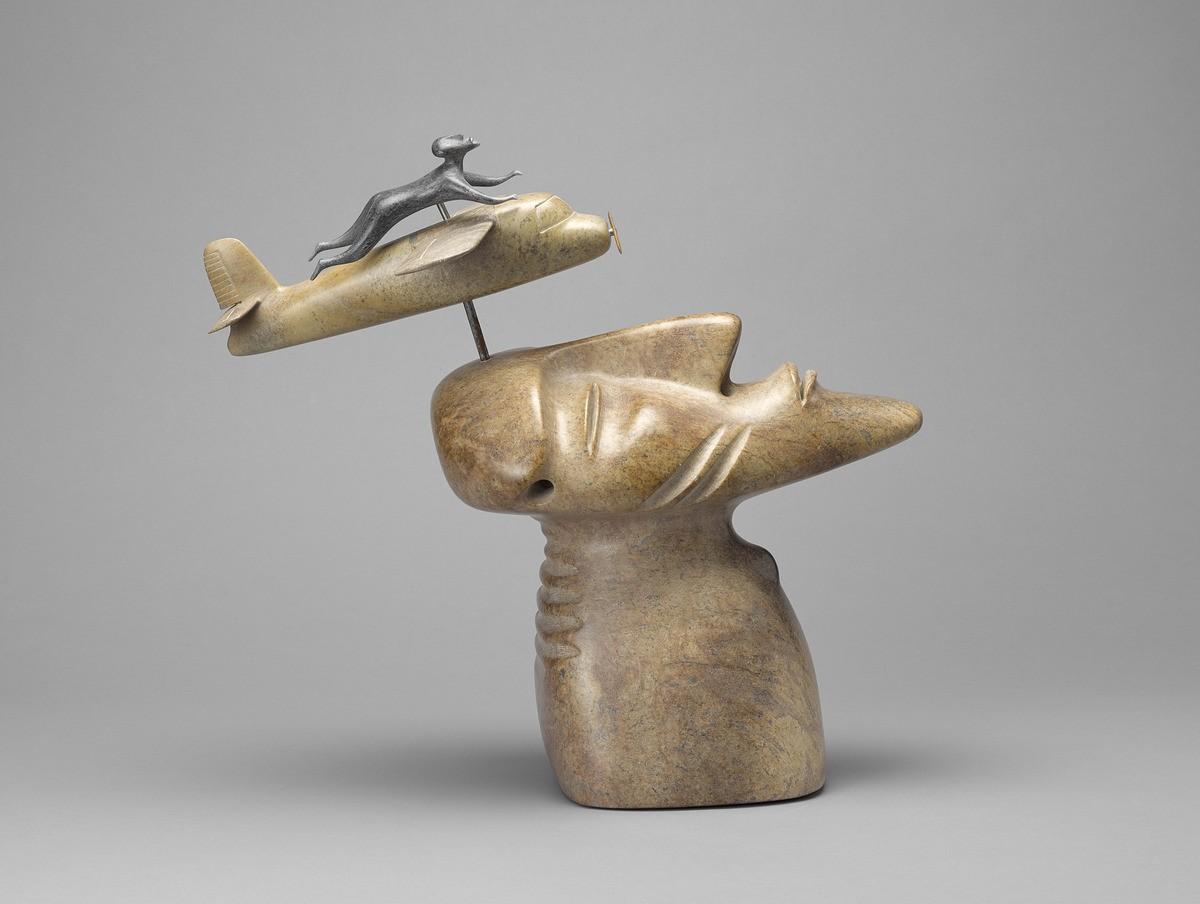
David Ruben Piqtoukun. Shaman in Flight. Stone, wood, assembled: 43.5 × 20 × 48 cm. Private Collection. © David Ruben Piqtoukun. Photo AGO.
Foyer: What does it mean to you to win the Governor General Award?
Piqtoukun: It means a lot to me. The work that I’ve done over the past 50 years has been acknowledged. I'm not a nobody anymore. I did something, I showed my other side. I’m a stone carver and sculptor by profession, so it's nice to have one’s talents in their lifetime to be acknowledged properly. I can stand with the rest of them.
Radical Remembrance: The Sculptures of David Ruben Piqtoukun is on view now at the AGO through June 25, 2023.

